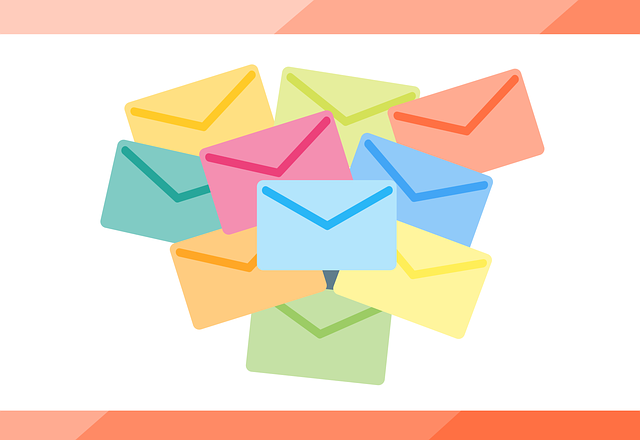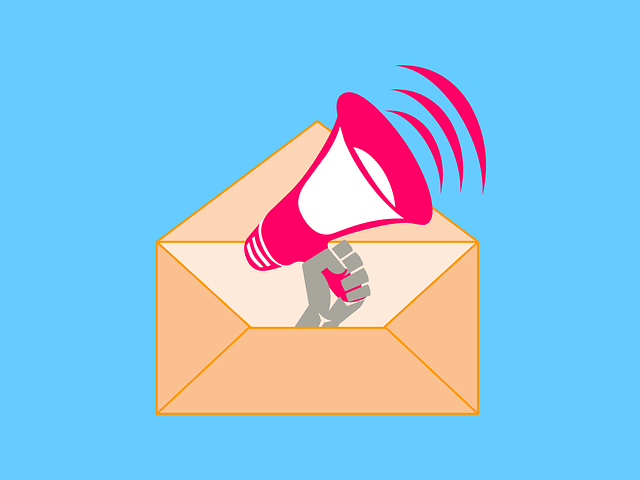Did you know that personalized emails deliver 6x higher transaction rates than generic ones? When it comes to email marketing for financial services, personalization is the key to success. In a world where customers are bombarded with countless emails every day, standing out from the crowd is crucial.
But how can you make your emails resonate with your target audience and drive results?
In this article, we will share 10 tips for achieving email marketing personalization that will revolutionize your financial services campaigns.
First, you need to understand your target audience inside out. By segmenting your email lists, you can create tailored content that speaks directly to your customers’ needs and interests. And don’t just stop there – use dynamic content and personalization tokens to make each email feel like a one-on-one conversation.
Compelling subject lines are also essential to grab your recipients’ attention and encourage them to open your email. Once they do, it’s crucial to provide relevant and valuable content that addresses their pain points and offers solutions. And of course, don’t forget to test and analyze your campaigns to continuously improve your results.
So, let’s dive in and unlock the power of email marketing personalization for financial services.
Key Takeaways
- Personalized emails deliver higher transaction rates than generic ones
- Understanding your target audience is important for personalization
- Compelling subject lines are essential to grab recipients’ attention and encourage email opens
- Provide relevant and valuable content that addresses customers’ pain points and offers solutions
Understand Your Target Audience
Get to know your target audience like a detective uncovering clues, so you can craft personalized email campaigns that hit the bullseye.
Understanding customer preferences is essential in email marketing personalization for financial services. By analyzing their behavior and preferences, you can tailor your email content to resonate with them on a deeper level. Use behavioral targeting to gather insights on their buying habits, interests, and needs. Leverage this data to create highly relevant and engaging emails that capture their attention.
By showing that you understand their unique needs and desires, you can build trust and loyalty. But don’t stop there! In the next section about segmenting your email lists, you’ll learn how to take personalization to another level.
Segment Your Email Lists
Start by organizing your email lists into different segments based on factors such as demographics, behavior, or preferences. This enables you to send targeted and personalized emails that resonate with your audience, leading to higher open rates and engagement. For instance, if you’re a financial advisor, you could create separate segments for millennials, retirees, and small business owners. By tailoring your messaging and offers specifically to their needs and interests, you can increase the likelihood of them opening your emails and taking action. To help you visualize the importance of segmenting your email lists, consider the following table:
| Segment | Description |
|---|---|
| Millennials | Age 18-34, tech-savvy, debt-conscious |
| Retirees | Age 65+, conservative investors |
| Small Business | Owners of businesses with less than 50 employees |
Segmenting your email lists allows you to target your audience effectively and deliver personalized content that resonates with them. By doing so, you can significantly increase your open rates and engagement. Now, let’s explore how you can further enhance your email marketing efforts through the use of dynamic content and personalization tokens.
Use Dynamic Content and Personalization Tokens
Enhance your email communication by using dynamic content and personalization tokens, allowing you to create engaging and tailored messages that your audience will love.
Personalization strategies are key to increasing customer engagement and driving conversions. By dynamically inserting personalized content and using tokens to personalize your emails, you can deliver relevant information to each individual recipient.
This level of personalization goes beyond just addressing your customers by their first name. You can tailor your content based on their previous interactions, preferences, and even demographics. This data-driven approach ensures that your emails are highly targeted and resonate with your audience.
By implementing these personalization strategies, you can significantly improve open rates, click-through rates, and ultimately, conversions. Craft compelling subject lines that grab your readers’ attention and entice them to open your emails.
Craft Compelling Subject Lines
Capture attention and increase open rates with subject lines that are intriguing, irresistible, and impossible to ignore. Subject line optimization is crucial for email marketing success, as it’s the first thing recipients see in their inbox.
To help you craft compelling subject lines that drive results, here are four key tips:
-
Be concise and specific: Use concise language and clearly communicate the value or benefit of opening the email.
-
Create a sense of urgency: Incorporate words like ‘limited time offer’ or ‘last chance’ to create a sense of urgency and encourage immediate action.
-
Personalize whenever possible: Use personalization tokens to address recipients by their name or include personalized information that resonates with their needs.
-
Test and analyze: Continuously test different subject lines and analyze the open rate data to identify what works best for your audience.
By implementing these subject line optimization strategies, you can significantly increase your open rates.
Now, let’s move on to the next section about providing relevant and valuable content.
Provide Relevant and Valuable Content
Delivering content that is both relevant and valuable is essential for engaging your audience and driving meaningful interactions. In the world of email marketing for financial services, this holds true more than ever.
To capture the attention of your recipients, you need to provide them with personalized and tailored offers that align with their specific needs and interests. Gone are the days of generic newsletters that get lost in the inbox. Instead, focus on sending customized recommendations based on your customers’ preferences and behaviors.
Whether it’s suggesting personalized investment strategies or providing insights into tax planning, your content should add value to their financial journey. By offering relevant and valuable information, you’ll not only build trust but also increase the likelihood of conversions and long-term customer satisfaction.
As you move forward, let’s explore the next step: test and analyze your campaigns to optimize your email marketing strategy.
Test and Analyze Your Campaigns
Improve your email strategy by analyzing the performance of your campaigns, allowing you to make data-driven decisions and optimize your future marketing efforts.
Here are four key ways to test and analyze your campaigns:
-
A/B Testing: Split your audience into two groups and send different versions of your email to each. Measure the response rates and identify which version performs better.
-
Conversion Tracking: Use tracking tools to monitor the actions taken by recipients after opening your email. This data will help you understand what elements are driving conversions and what needs improvement.
-
Segment Analysis: Break down your audience into different segments based on demographics, behaviors, or preferences. Analyze the performance of your campaigns for each segment to identify patterns and tailor your messaging accordingly.
-
Benchmarking: Compare the performance of your campaigns to industry benchmarks to see how you measure up. This will give you insights into areas where you can improve and set realistic goals for your future campaigns.
By implementing these testing and analyzing techniques, you can fine-tune your email marketing strategy and achieve better results. Don’t rely on guesswork – let the data guide you towards success.
Frequently Asked Questions
How can I effectively measure the success of my email marketing campaigns?
To effectively measure the success of your email marketing campaigns, focus on two key factors: measuring engagement and evaluating ROI.
When it comes to measuring engagement, track metrics such as open rates, click-through rates, and conversion rates. This will give you insights into how well your emails are resonating with your audience.
Additionally, evaluating ROI is crucial to determine the financial impact of your campaigns. Analyze metrics like revenue generated, cost per conversion, and customer lifetime value to gauge the overall effectiveness of your email marketing efforts.
What are some best practices for designing visually appealing email templates?
Want your email templates to stand out and grab attention? Looking for creative elements to make your designs visually appealing?
Well, here are some email template design tips that will make your campaigns shine! How about incorporating eye-catching graphics, bold colors, and compelling call-to-action buttons?
Don’t forget to optimize your templates for mobile devices and keep your design clean and clutter-free. By following these best practices, you’ll create emails that captivate your audience and drive results.
Get ready to take your email marketing to the next level!
How can I ensure that my emails are delivered to the recipients’ inbox and not marked as spam?
To ensure your emails are delivered to recipients’ inboxes and avoid spam filters, follow these data-driven tips.
First, maintain a clean email list by regularly removing inactive or invalid addresses.
Secondly, personalize your subject lines and content to engage your audience.
Additionally, use a reputable email service provider that complies with industry standards.
Avoid using too many images or excessive formatting, as these can trigger spam filters.
Lastly, regularly monitor your email deliverability metrics to identify and resolve any issues promptly.
Are there any legal regulations or guidelines that I need to be aware of when personalizing emails for financial services?
When personalizing emails for financial services, it’s crucial to be aware of legal regulations and compliance considerations. This ensures that you don’t run into any legal issues and maintain a trustworthy reputation. Adhering to guidelines such as the CAN-SPAM Act and GDPR is essential.
Implementing strong data protection measures and obtaining explicit consent from recipients will help you stay compliant. By following these regulations, you can build customer trust, improve deliverability, and increase the effectiveness of your personalized email campaigns.
What are some effective strategies for growing my email subscriber list in the financial services industry?
To grow your email subscriber list in the financial services industry, focus on effective email segmentation and lead generation.
Start by identifying your target audience and create personalized content that resonates with their specific needs and interests.
Use compelling calls-to-action to encourage sign-ups and offer valuable incentives like exclusive financial tips or free resources.
Leverage social media and online advertising to expand your reach and drive traffic to your subscription page.
By implementing these strategies, you’ll attract more engaged subscribers and boost your email marketing success.
Conclusion
Congratulations! You’ve successfully navigated the world of email marketing personalization for financial services. By understanding your target audience and segmenting your email lists, you’ve set the foundation for success.
With the use of dynamic content and personalization tokens, you’ve created a personalized experience that grabs the attention of your audience. Crafting compelling subject lines and providing relevant and valuable content further engages your readers.
By testing and analyzing your campaigns, you have the power to continuously improve and drive results. So, keep up the creative, persuasive, and data-driven approach, and watch your email marketing soar to new heights of success!










